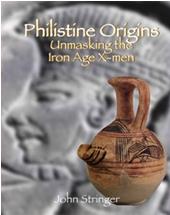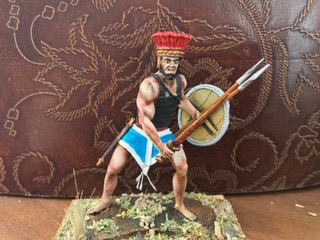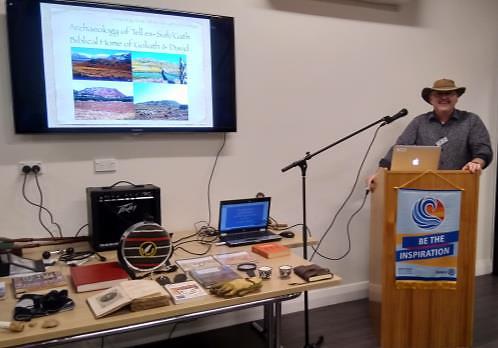Excavating the Tell es-Safi (Gath) Archaeological Site

John Stringer spoke about his fascinating experiences excavating at the archaeological site of Tell es-Safi (biblical Gath), the home of Goliath and of David, in the Elah Valley.
The site sits inland in a triangle between Tel Aviv and Jerusalem in the foothills of Judea. It is significant as being one of the main cities of the Philistine Pentapolis and the excavations are concerned with understanding the Philistine culture in the late Bronze Age ca. 1100 BC transitioning into the Iron Age, the era of King David and Solomon.

John believes the Philistines (the “Plst” of Egyptian cartouches) were actually a coordinated and organised Mycenaean colonisation, first of the Nile delta and then up the Cannanite coast where they settled (“The Way of the Philistines”).

A Philistine Warrior
John explained about the animals found on site, showed photos of how a site looked, how it was organised, and showed physical examples of tools used, the kind of attire necessary plus other practical components of an archaeological dig including what kind of food is eaten, accommodation etc.
He also mentioned that working the site occurred from very early in the morning to around midday as extremely hot temperatures made it too challenging to continue on site later in the day.

John on site early morning
He then went into detail about the kinds of things found including bones, obsidian blades, worked stones, clay bricks, and pottery. He explained that archaeology also looks for things that are not there such as pork bones which, if absent, suggests a Jewish context.
John completed his Masters research at Victoria in classical studies focussing on aspects of Philistine material culture and in particular on their art. He drew commonalities and similarities with Mycenaean art including the use of distinctive florals and bird motifs, female goddesses and particular graphic elements, weaponry, clothing and other cultural patterns described by the Egyptians (Ramses III) and the Bible (1 and 2 Samuel).

We thanked John for his intriguing insight into the dig and club members took the opportunity to look up close at the array of materials, clothing and artefacts he had brought along with him.